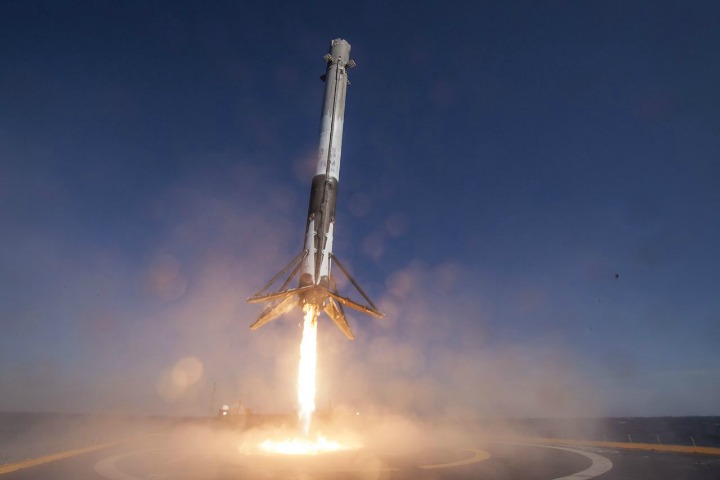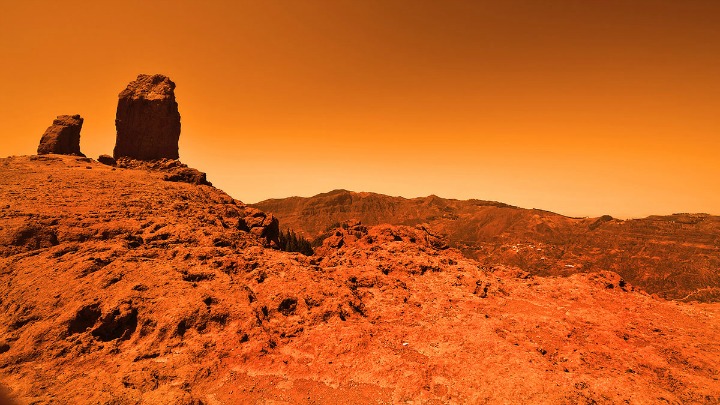Mars by 2022: Elon Musk Explains How It Can be Done

Source: Flickr: Elon Musk – The Summit 2013. Licensed under the Creative Commons Attribution 2.0 Generic license.
“What I really wanna try to achieve here is to make Mars seem possible.” were the opening words of SpaceX co-founder and CEO Elon Musk during his one-hour talk International Astronautical Congress in Guadalajara, Mexico last Tuesday, September 27. According to Musk, a manned mission to Mars can begin as soon as 2022, which is a couple of years earlier than he previously predicted.
During the said event, Musk also explained why humanity needs to colonize the final frontier, particularly Mars, and laid out plans and concepts about the technology that we will need and how we can afford to go to there.
Why we need to go?

image source: Loren Grush/theverge.com
“I think there are two fundamental paths… One path is we stay on Earth forever and then there will be some eventual extinction event… The alternative is to become a space-faring civilization and a multi-planet species”
According to Musk, space colonization may one day save humanity if or when an extinction-level event hits Earth. He went on to explain why Mars is the best candidate for a second home; stating similarities between the red planet and Earth such as temperature, atmospheric composition and day length (24 hours and 40 minutes in Mars.)
Who can go?
One of the main hurdles to a colonized Mars is the cost. Using traditional methods, a trip to Mars would take about 10 billion dollars per person; not a realistic price if we wish to relocate a sizeable population.
If everything goes as Elon Musk plans, a trip to mars may one day cost as much as buying a house. In his speech, Elon Musk explained how to bring the trip’s cost down to about 200 thousand dollars per person, which is the median cost of a house in the United States. According to Musk, one of the key elements is full reusability of resources. As an example, he cited how a trip on a 90 million dollar Boeing 737 would cost 500 thousand dollars per person if the aircraft is used only once. Using the same model on a Mars transport system can drastically lower costs.
How to get there?

image source: Nat Berman/moneyinc.com/
To give us a better idea of what SpaceX is planning to accomplish, a concept video was presented which illustrates how a sustainable Earth-to-Mars transit system can work. Musk noted that the video is “not an artist impression” and that “the simulation was actually made from the SpaceX engineering CAD models.”
In the video, the vehicle that will take people to Mars will be composed of three main parts; a booster, a propellant tanker, and the main spaceship. The SpaceX Interplanetary Transport System vehicle will first leave the Earth as a 2-stage rocket composed of the booster and the main spaceship which can carry up to 100 people. Once free of the Earth’s atmosphere, the spaceship will detach and stay in a “parking orbit”. The booster, which has guidance and decent-control capabilities, will head back to Earth and land right back at the launch platform.
Shortly after arrival, the booster will be attached to the propellant tanker which is about the same size and shape as the main spaceship. The two will then head out to meet the main spaceship in orbit where they will detach so that the tanker can dock with the spaceship and perform an in-orbit refuelling. After that, the spaceship will be on its way to Mars at speeds of about 100 thousand kilometres or 62 thousand miles per hour.
How will it be funded?
Of course, before the average Joe can book a flight to Mars, SpaceX will have to get initial funding for the development of an inter-planetary transport system. To address this, Elon Musk presented this rather humorous plan to gain revenue:
- Steal Underpants
- Launch Satellites
- Send Cargo and Astronauts to ISS
- Kickstarter
- Profit
To those of you who are not South Park fans “Steal Underpants” is a reference to an episode of the animated show in which Gnomes steal underpants as a part of a vague plan to gain profit.
On a more serious note, Musk explained that launching satellites and transporting people and cargo to the International Space Station, which are already parts of the SpaceX business model are going to be major parts of the revenue stream that will fund a trip to Mars. He also talked about getting funding from government entities, saying “Ultimately, this is gonna be a huge public-private partnership.”